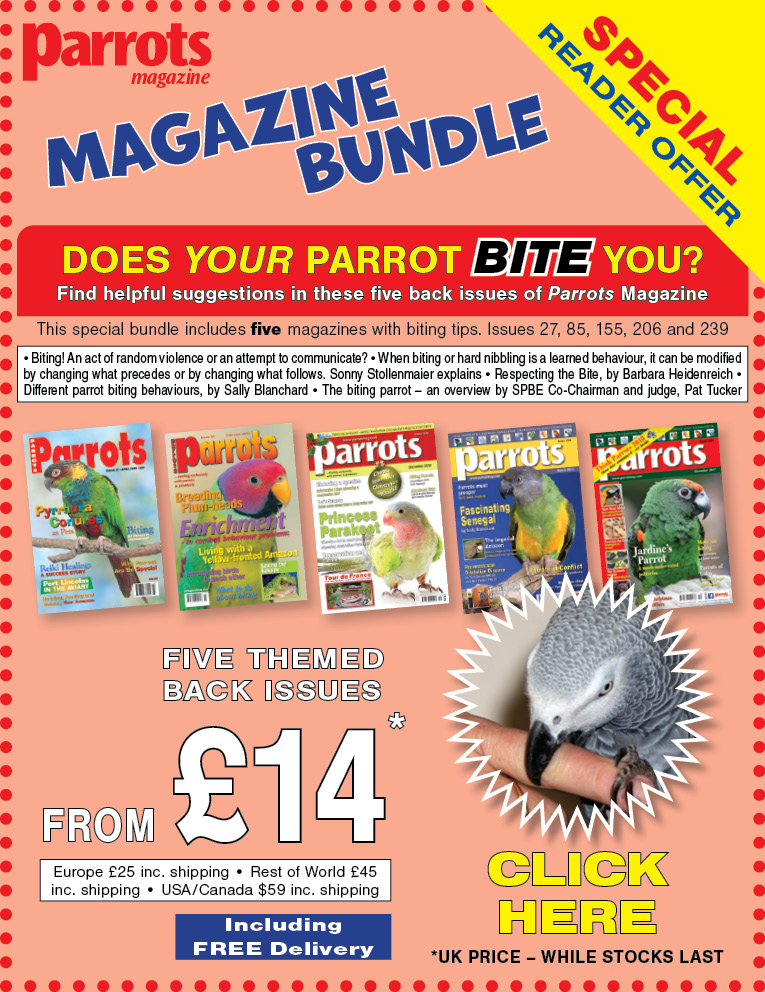by Jessie Zgurski
In the February, 2010 issue of Parrots magazine, I wrote about my experience watching Hyacinth Macaws on a visit to the Pantanal region of Brazil. The Pantanal is in west-central Brazil and is the world’s largest wetland, but I visited it during the dry season, when travelling overland is much easier. The Pantanal is an excellent travel destination for people who enjoy bird watching and have a particular interest in parrots. In addition to the Hyacinth Macaws, I also saw Green-winged and Blue and Gold Macaws, Blue-fronted Amazons, Nanday Conures, Peach-fronted Conures, Yellow-chevroned Parakeets, and Quaker Parakeets. Several other parrot species also occur in the region, including Maximilian’s Pionus, Blue-crowned Conures, and Yellow-collared Macaws.
I loved watching the Quaker Parakeets since they were such active, chatty, and charming birds. They are very abundant in the Pantanal and were not difficult to find, primarily because of their huge nests, their tendency to nest in the open (rather than in dense forests) and their loud, harsh voices. If it where not for these traits, they’d probably blend in much better with their environment, since they are primarily green and grey. While the Quakers were not as brightly coloured as the other parrot species I saw in the Pantanal, they had a lot of character and were a joy to watch.
There were flocks of Quakers living in nests in the trees right outside the room I stayed in. I was not surprised, because they often live close to human settlements, and can sometimes be found within very large cities. I could hear them when they woke up very early each morning, at about 5.30 am. They had built their nests at the top of palm trees, right underneath the dead leaves that drooped down near the top. These thick, tough leaves acted like curtains over the nest entrances and protected the birds inside from wind and rain.
Read more in the magazine…









Parrot Chat
Buyers Guides
Breeding articles